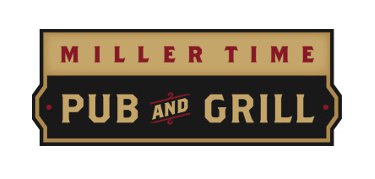
Photo Credit: Dinur (Flickr CC)
Another week has passed and it’s time to acknowledge, once again, that the Milwaukee Brewers remain atop the National League Central with more than a third of the 2017 MLB season in their rear view mirror. It’s not a position most expected to find them in at this point, and it raises a recurring question: What impact, if any, should it have on the team’s rebuild?
If the current standings are any indication, there should be impact players available for teams looking to make a splash at the trade deadline. In the National League alone there are eight teams at 25-30 or worse, and seven of those eight teams are more than ten games back of their respective division leaders. If David Stearns and company were to decide to take a sudden change of direction, there would likely be plenty of opportunities to move some of their prized prospects in exchange for an opportunity to “go for it.”
With that said, there may also be opportunities out there for the Brewers to have (at least some) cake and eat it too, improving the 2017 roster while also preserving the most significant pieces of their anticipated future successes. Here are three ways the Brewers could see an opportunity to improve without having to mortgage the future:
Reinvest the savings
The Brewers are winning despite a 2017 Opening Day payroll of just over $63 million, almost seven million dollars less than the next lowest MLB team (the Rays, who are just a shade under $70 million). Ticket sales are only a portion of MLB teams’ revenue, but the Brewers’ surprising start will almost certainly lead to higher-than-anticipated numbers of fans attending games down the stretch.
![]() Stay on top of the news of the day
Stay on top of the news of the day
Subscribe to our free, daily e-newsletter to get Milwaukee's latest local news, restaurants, music, arts and entertainment and events delivered right to your inbox every weekday, plus a bonus Week in Review email on Saturdays.
July could provide the Brewers with opportunities to use that financial flexibility to their advantage in deals with two types of teams:
· Non-contenders looking to lighten their financial loads. The Blue Jays, for example, have scratched their way back into the AL East race but are still under .500 and owe about $120 million this season alone to players age 30 or over.
· Trade deadline buyers needing to clear payroll space. Baseball’s “Luxury Tax” creates escalating penalties for teams whose total payrolls exceed a threshold ($195 million in 2017) for a period of years (a full explanation can be found here). Teams at or near that spending level may feel compelled to trade away salary at one position to make room for acquisitions at another.
Either way, another team’s disappointing contract could be the Brewers’ bullpen help, bench bat or even fifth starter down the stretch.
Sell the surplus
Annually the teams with loaded farm systems are confronted with a bit of a roster crunch: Come fall there will be limited space available on their 40-man roster but players with sufficient minor league experience who are not added to that roster will become eligible for the Rule 5 Draft and could be lost to another franchise in exchange for a relatively small amount of cash. The Brewers just lost reliever Miguel Diaz this way last winter, and figure to have more quality prospects than spots available at the end of this season. A quick glance at minor league rosters shows infielder Mauricio Dubon, catcher Jacob Nottingham and pitcher Freddy Peralta among players in their fifth professional seasons who will either need to be protected on the 40-man roster or left available to be selected.
One way to avoid risking losing a player that way would be to work proactively to get something for them now. A deal like this probably won’t send shockwaves through the Brewers fandom, but it might give the team an opportunity to pick up some minor short-term help in exchange for a prospect they’re going to risk losing anyway.
Let the kids play
Finally, instead of using the organization’s potential future stars as a commodity the Brewers could consider calling some of them up and letting them experience a pennant race. Most prospect evaluators agree that somewhere between four and six of the organization’s top ten prospects are at the AAA or AA level right now, making a potential leap to the big leagues a feasible, if not imminent, occurrence.
This option carries some peril, of course: Bringing up a prospect but not playing them every day or outside of their established role could stunt their development and do more harm than good, and their “growing pains” at the big league level could negatively impact the Brewers’ chances of competing in the short term. With that said, the reverse is also possible: A hot start at the right time could vault a young player to stardom.
None of these potential options would dramatically alter the face of the franchise, of course. But if the Brewers continue to find themselves within a few wins of contention, any and all of them might be worth considering soon.
